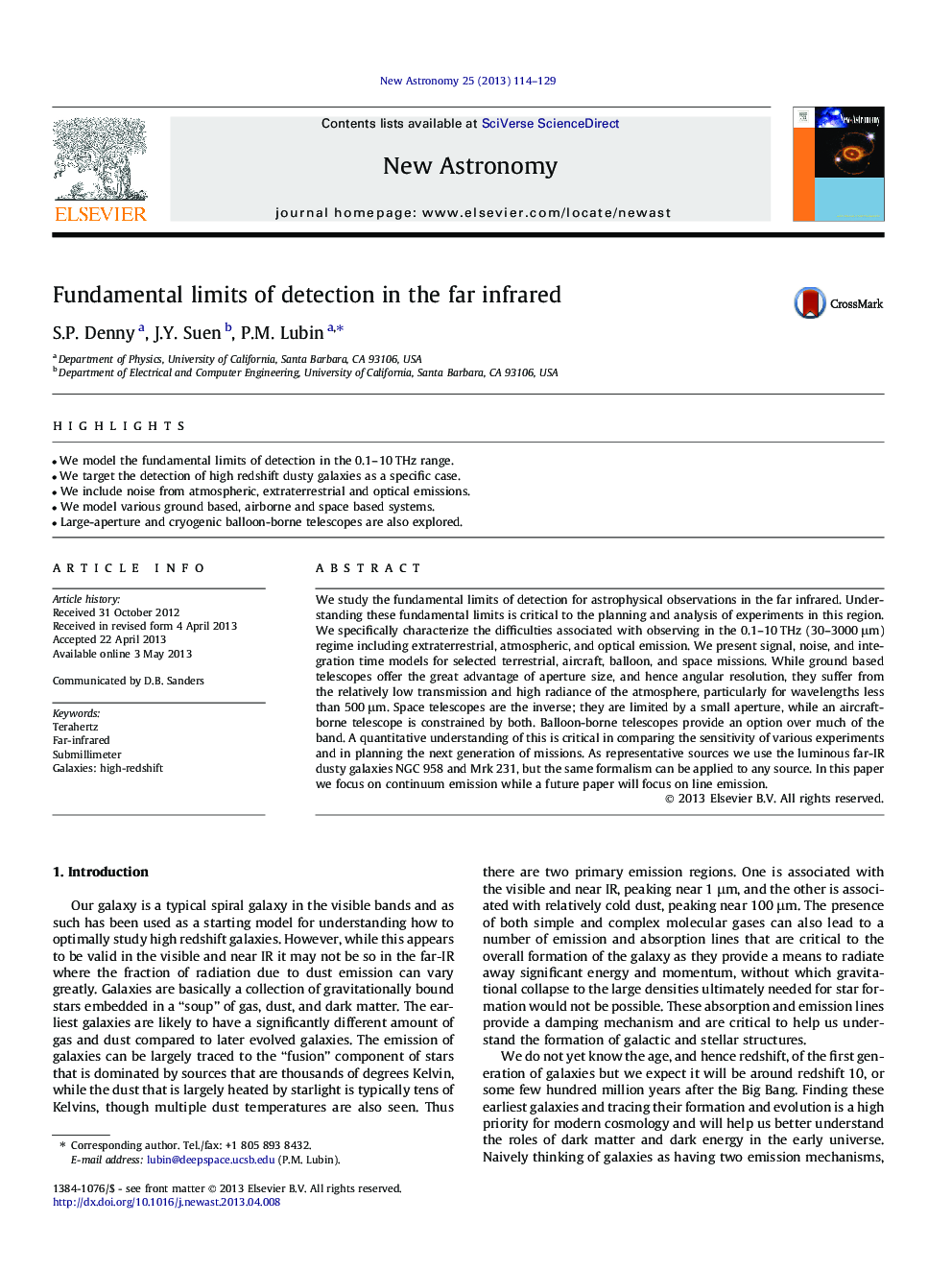| کد مقاله | کد نشریه | سال انتشار | مقاله انگلیسی | نسخه تمام متن |
|---|---|---|---|---|
| 1779039 | 1523753 | 2013 | 16 صفحه PDF | دانلود رایگان |

• We model the fundamental limits of detection in the 0.1–10 THz range.
• We target the detection of high redshift dusty galaxies as a specific case.
• We include noise from atmospheric, extraterrestrial and optical emissions.
• We model various ground based, airborne and space based systems.
• Large-aperture and cryogenic balloon-borne telescopes are also explored.
We study the fundamental limits of detection for astrophysical observations in the far infrared. Understanding these fundamental limits is critical to the planning and analysis of experiments in this region. We specifically characterize the difficulties associated with observing in the 0.1–10 THz (30–3000 μm) regime including extraterrestrial, atmospheric, and optical emission. We present signal, noise, and integration time models for selected terrestrial, aircraft, balloon, and space missions. While ground based telescopes offer the great advantage of aperture size, and hence angular resolution, they suffer from the relatively low transmission and high radiance of the atmosphere, particularly for wavelengths less than 500 μm. Space telescopes are the inverse; they are limited by a small aperture, while an aircraft-borne telescope is constrained by both. Balloon-borne telescopes provide an option over much of the band. A quantitative understanding of this is critical in comparing the sensitivity of various experiments and in planning the next generation of missions. As representative sources we use the luminous far-IR dusty galaxies NGC 958 and Mrk 231, but the same formalism can be applied to any source. In this paper we focus on continuum emission while a future paper will focus on line emission.
Journal: New Astronomy - Volume 25, December 2013, Pages 114–129